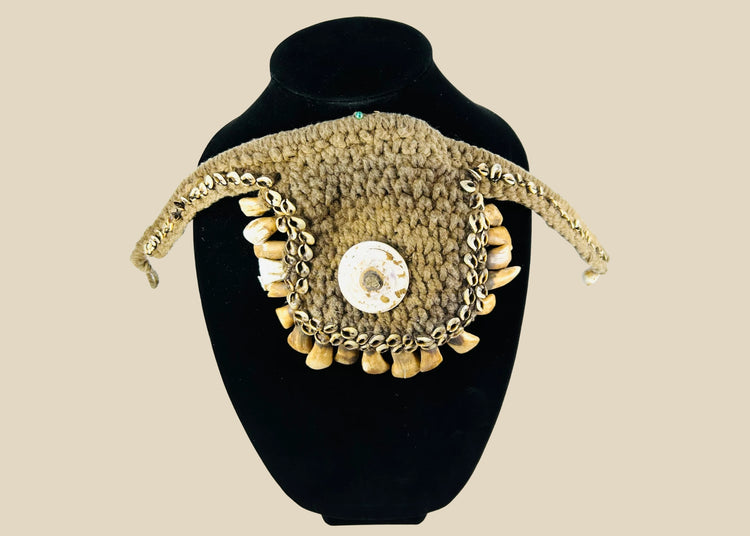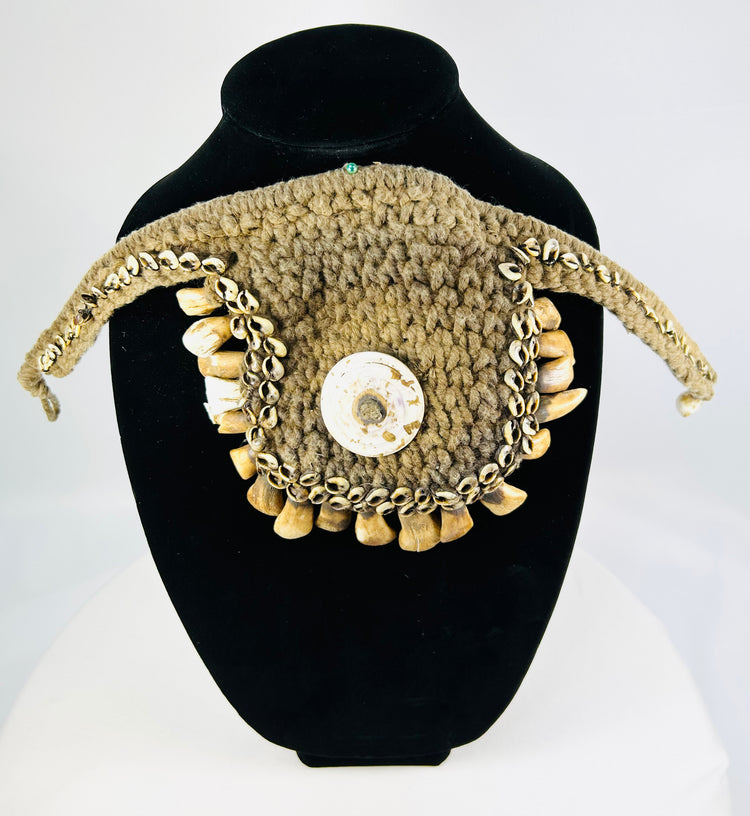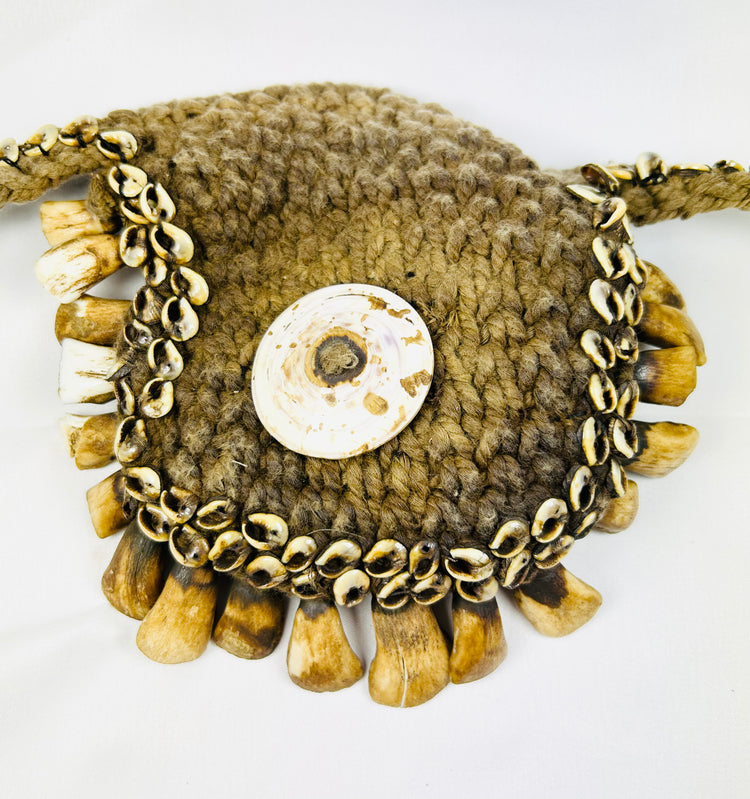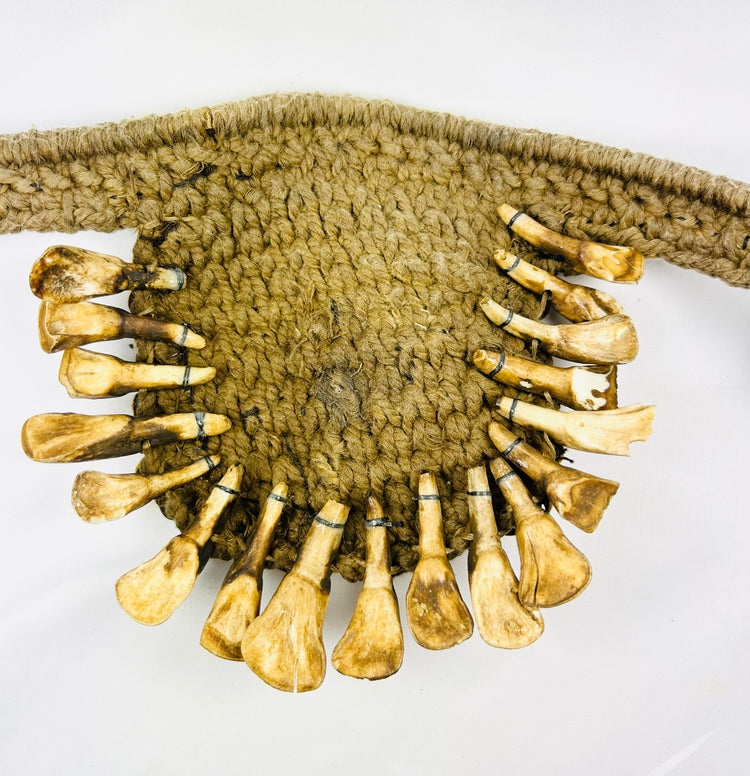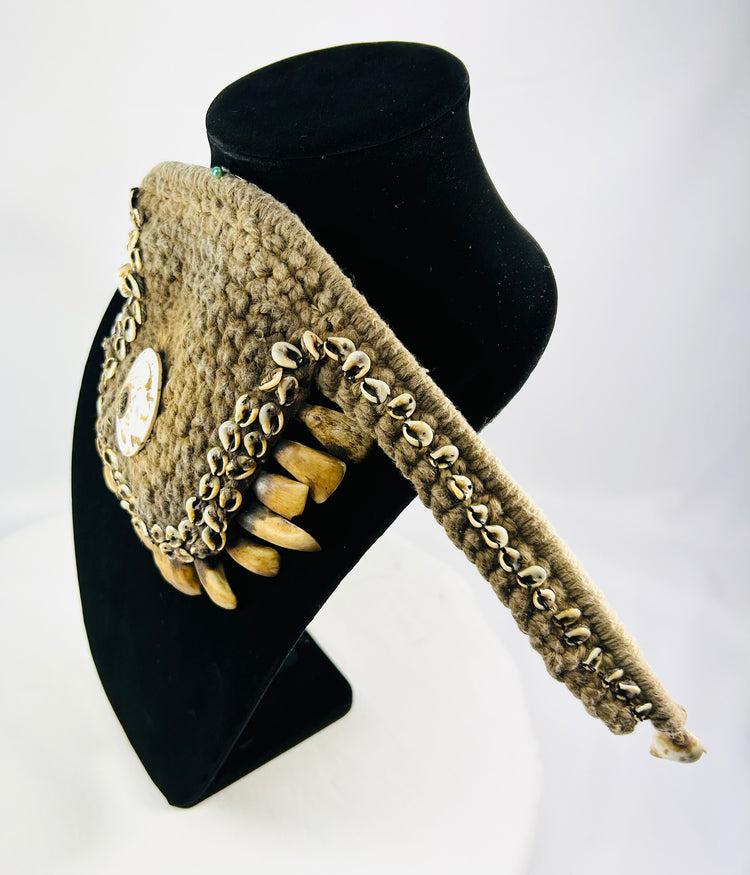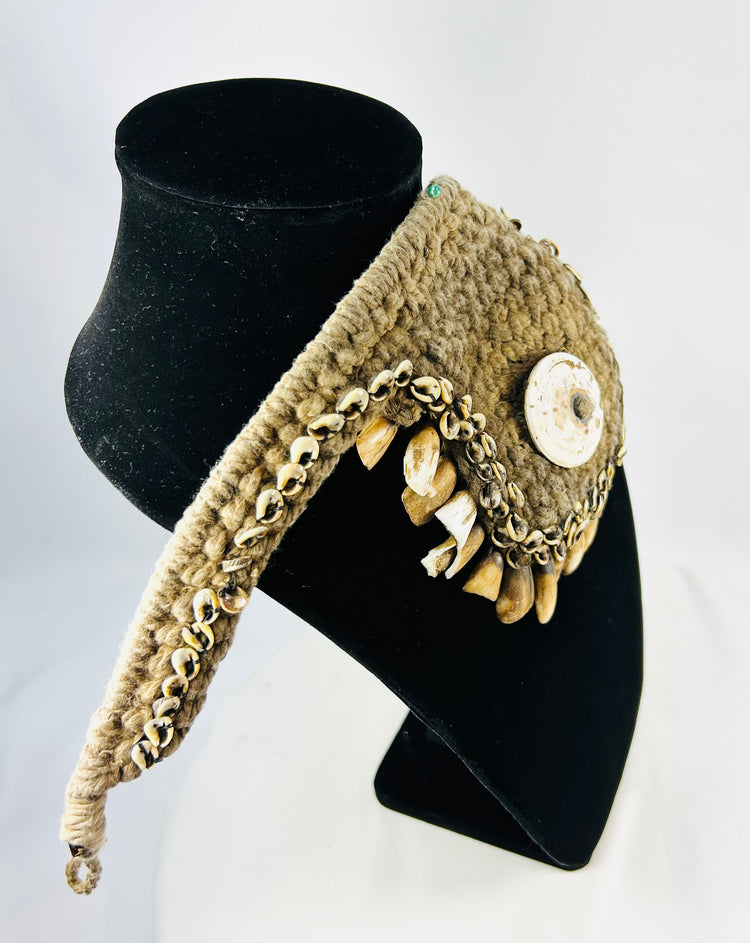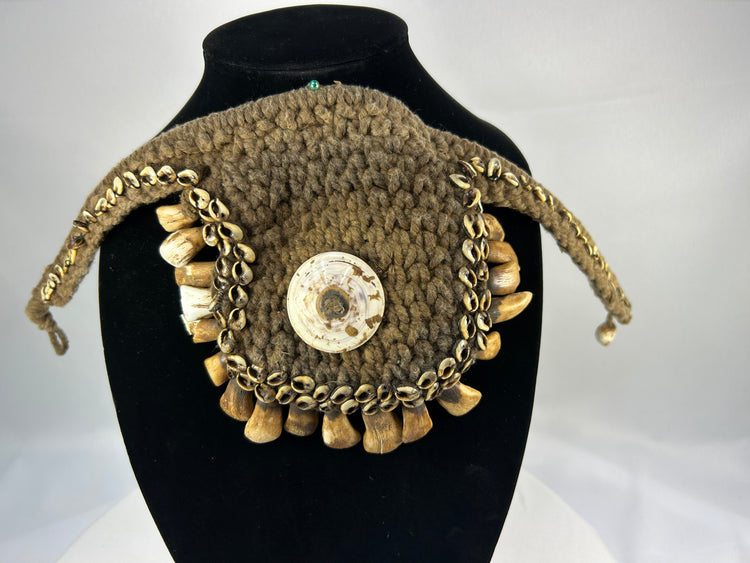Adorno tribal ritual con centro de concha de cauri y fleco dentado | Hacia el siglo XIX y principios del XX
Descripción
Más
Menos
Contexto histórico y origen
Región: Papúa Nueva Guinea, Melanesia
Material: Fibra vegetal tejida, concha de cauri, dientes de animales (probablemente de cerdo o canino), cordel natural
Periodo: finales del siglo XIX – principios del siglo XX
Descripción
Este llamativo adorno ceremonial de Papúa Nueva Guinea combina fibras vegetales tejidas, cordelería natural y materiales orgánicos de prestigio para lograr un efecto impactante. Una concha cauri central ancla el diseño, sobre un fondo de fibra densamente tejida, mientras que hileras de dientes perforados de animales crean un fleco espectacular. Diseñada para usarse como tocado o adorno para el pecho, la pieza enfatiza el sonido, el movimiento y la presencia visual durante la celebración ritual. La integración de conchas y dientes refleja riqueza y simbolismo espiritual, subrayando su papel en la iniciación, la danza o la exhibición guerrera.
Características
- Adorno ceremonial tradicional de Papúa Nueva Guinea
- Base de fibra vegetal tejida con concha de cauri central
- Franja suspendida de dientes de animales perforados, probablemente de cerdo o perro.
- Fabricado con cordaje natural para mayor durabilidad y resistencia al desgaste.
- Fuerte presencia escultórica y etnográfica al montarse para su exhibición.
Importancia cultural
En Papúa Nueva Guinea, los adornos tenían un profundo significado simbólico y social, ya que las conchas, los colmillos y los dientes servían como indicadores de prestigio, poder y conexión ancestral. La concha cauri, valorada como moneda y adorno en toda Oceanía, funcionaba como un importante centro de riqueza y espiritualidad, mientras que los dientes simbolizaban vitalidad, protección y destreza para la caza. Estas galas solían reservarse para ceremonias, afirmando la identidad, el estatus y la continuidad dentro de la comunidad.
Condición
Buen estado etnográfico. Tejido de fibra intacto con ligero desgaste; el cordel y los dientes presentan la pátina y las marcas de manipulación típicas de su antigüedad y uso ritual.
Dimensiones (aproximadas)
Longitud: 20 pulgadas
Edad
Finales del siglo XIX – principios del siglo XX
Descripción
Contexto histórico y origen
Región: Papúa Nueva Guinea, Melanesia
Material: Fibra vegetal tejida, concha de cauri, dientes de animales (probablemente de cerdo o canino), cordel natural
Periodo: finales del siglo XIX – principios del siglo XX
Descripción
Este llamativo adorno ceremonial de Papúa Nueva Guinea combina fibras vegetales tejidas, cordelería natural y materiales orgánicos de prestigio para lograr un efecto impactante. Una concha cauri central ancla el diseño, sobre un fondo de fibra densamente tejida, mientras que hileras de dientes perforados de animales crean un fleco espectacular. Diseñada para usarse como tocado o adorno para el pecho, la pieza enfatiza el sonido, el movimiento y la presencia visual durante la celebración ritual. La integración de conchas y dientes refleja riqueza y simbolismo espiritual, subrayando su papel en la iniciación, la danza o la exhibición guerrera.
Características
- Adorno ceremonial tradicional de Papúa Nueva Guinea
- Base de fibra vegetal tejida con concha de cauri central
- Franja suspendida de dientes de animales perforados, probablemente de cerdo o perro.
- Fabricado con cordaje natural para mayor durabilidad y resistencia al desgaste.
- Fuerte presencia escultórica y etnográfica al montarse para su exhibición.
Importancia cultural
En Papúa Nueva Guinea, los adornos tenían un profundo significado simbólico y social, ya que las conchas, los colmillos y los dientes servían como indicadores de prestigio, poder y conexión ancestral. La concha cauri, valorada como moneda y adorno en toda Oceanía, funcionaba como un importante centro de riqueza y espiritualidad, mientras que los dientes simbolizaban vitalidad, protección y destreza para la caza. Estas galas solían reservarse para ceremonias, afirmando la identidad, el estatus y la continuidad dentro de la comunidad.
Condición
Buen estado etnográfico. Tejido de fibra intacto con ligero desgaste; el cordel y los dientes presentan la pátina y las marcas de manipulación típicas de su antigüedad y uso ritual.
Dimensiones (aproximadas)
Longitud: 20 pulgadas
Edad
Finales del siglo XIX – principios del siglo XX
También te puede interesar






























